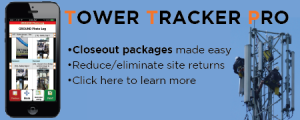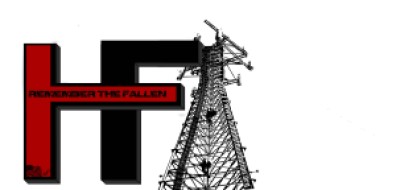Podcast: Play in new window | Download | Embed
Subscribe: Apple Podcasts | RSS
Are you curious about the merger and what it will bring? Do you want look into the future and see what could happen? This report covers the future and the past to give you a history as well as makes some predictions on a potential merger. If it does happen, would they downsize? Would they strike a blow to Verizon and AT&T? Would they improve financially? Would Sprint finally set a plan in place to sunset CDMA? Only one way to find out!
This is a report by Wade Sarver and the opinion of the writer. This blog is a partial of the full report. The full report can be purchased as a PDF on Gumroad or Sellfy.
Summary
We all know that Softbank wants to merge Sprint and T-Mobile. We all saw that Softbank CEO Masayoshi Son met with USA president-elect Donald Trump. We also know that the FCC under President O bama did not like mergers between major carriers. Let’s go in-depth to cover what would happen is the merger happens. This report will cover not only how the carriers and their technology will play together, but the trickle-down effect to the OEMs, service vendors, and tower companies will be affected. I have included links to resources for you to verify the history and facts while the speculation of what will happen is just that, speculation based on my experience in the industry.
bama did not like mergers between major carriers. Let’s go in-depth to cover what would happen is the merger happens. This report will cover not only how the carriers and their technology will play together, but the trickle-down effect to the OEMs, service vendors, and tower companies will be affected. I have included links to resources for you to verify the history and facts while the speculation of what will happen is just that, speculation based on my experience in the industry.
Sign-up to get all your updates!
Don’t miss an episode on iTunes or Stitcher or Overcast
Meeting between Softbank Owner and the USA president-elect:
I am sure most of you saw Softbank CEO Masayoshi Son meet with President-Elect Donald Trump. One thing that Masayoshi Son has seen is an opportunity to merge T-Mobile and Sprint. This has been a goal of his and I think that he has seen T-Mobile as a key to getting Sprint out of the slump it’s been in. Let’s look at the meeting and then what it means.
Mr. Son has been frustrated with the prior administration’s FCC and SEC in the USA mainly because he thought that merging the 2 carriers would make a lot of sense. Guess what, it does for so many reasons, but the implications are more than just financial. Not everything about the merger will be good, I will explain below. For now, let’s look at what this meeting means.
Mr. Son  and President-Elect Trump are both going to look at growth of business in the USA. Sprint, while Wells Fargo keeps telling us how Sprint is bouncing back and the future is so bright we gotta wear shades, I don’t see it that way. Sprint has done the bare minimum on the network. However, what they have done has greatly improved their network for the least amount of money.
and President-Elect Trump are both going to look at growth of business in the USA. Sprint, while Wells Fargo keeps telling us how Sprint is bouncing back and the future is so bright we gotta wear shades, I don’t see it that way. Sprint has done the bare minimum on the network. However, what they have done has greatly improved their network for the least amount of money.
Back to the meeting, Masayoshi Son has offered to put $50B into the USA, not all of it is his money. He is raising $100B from investors around the world. From what CNBC says most of the money comes from Saudi Arabia, to invest. Trump obviously expects to see $50B of this come to America, and it appears that Son agreed to this.
Resources:
http://www.wsj.com/articles/softbank-investors-cheer-ceos-meeting-with-trump-1481095552
Did they try to merge before?
I was told that just prior to the AT&T attempted takeover of T-Mobile US in 2011 that Sprint had planned to merge with T-Mobile. Mentioned by CNN here and TMONEWS here. I believe that it was more  than a rumor. From what the insiders said the rumors had some basis to them. It would have made sense and one more thing that was obvious is when AT&T attempted to take over T-Mobile US Sprint came out publicly and did all that they could to stop it. More on that below.
than a rumor. From what the insiders said the rumors had some basis to them. It would have made sense and one more thing that was obvious is when AT&T attempted to take over T-Mobile US Sprint came out publicly and did all that they could to stop it. More on that below.
Then in 2014 they talked about merging again. It was Softbank pushing for this after their recent takeover of Sprint. They were really excited to become a major competitor in the USA. It looked like Softbank was willing to pay $32B for T-Mobile US, roughly $40/share. In this case, T-Mobile US CFO mentioned the merger first in 2013 stating that the merger would make sense to compete against the larger AT&T and Verizon. Remember that T-Mobile was growing quickly now. To add more confusion, Dish Network was making a play for Sprint and Clearwire. Sprint-owned most Clearwire at that time. Clearwire had the 2.5GHz spectrum at that time and was operating it on Wi-MAX. Dish failed and Softbank won, if you want to call it that. Sprint had massive debt.
In 2014 Sprint/Softbank gave up their quest for T-Mobile US because the FCC and the DoJ pushed back hard. While o the business side, the agreement seems to be moving ahead, the FCC had other plans. They did all that they could, like creating rules to block the merger of this kind. And this is the legacy of the Obama administration’s FCC.
Resources:
http://www.wsj.com/articles/sprint-t-mobile-generally-agree-on-merger-terms-1401919219
http://dealbook.nytimes.com/2014/08/06/no-takeover-but-plenty-of-taunts/
http://dealbook.nytimes.com/2014/08/05/sprint-and-softbank-said-to-abandon-bid-for-t-mobile-us/
Would merger create jobs inside the new company?
Honestly, I doubt the merger will bring more jobs to the US. If Son plans to invest in other businesses or startups, then I can see 50K jobs coming from $50B. In fact, is he just gave $1M to each of those 50K people, they would be on the way to massive job creation in the US, but I don’t see that happening.
Before I start, let it be known that both Sprint and T-Mobile workers that I know work very hard and very long hours. They go the extra mile for their respective companies. I hate to see anyone lose a job they love. I can’t believe how hard and dedicated many of these workers are, even when they disagree with the mother company, they still do all that they can to ensure success. Trust me, they don’t always like the policies or even what they do, but they all want to see success.
 Here is what I see from the merger as far as workers go. First the initial talks and the teams it would take to make the merger happen would be large, so the first year would be massive. Why? Because of the due diligence on the financial side and the technical side. It takes a lot of time and money to make these mergers happen.
Here is what I see from the merger as far as workers go. First the initial talks and the teams it would take to make the merger happen would be large, so the first year would be massive. Why? Because of the due diligence on the financial side and the technical side. It takes a lot of time and money to make these mergers happen.
There would probably be independent firms that would investigate the complete holdings and inventories and salaries of both sides. Something that Masayoshi Son probably did when he acquired Sprint. Also, T-Mobile would ask for over $2B up front, much like they did with AT&T. That money proved to be a great asset for T-Mobile. That Legere is always thinking! I believe that the due diligence that Son did for Sprint still missed quite a bit. There were things that we suspect he missed. I doubt he will make that mistake with T-Mobile US unless he wants them so badly he is willing to overlook some problems. Again, he should have learned something from Sprint, he’s an exceptionally smart guy or he wouldn’t be where he is.
Then![DAS 101 Distributed Antenna System: A Basic Guide to In-Building Wireless Infrastructure by [Baasan, Soyola]](https://i0.wp.com/images-na.ssl-images-amazon.com/images/I/41lhG0BQVJL.jpg?resize=99%2C158&ssl=1) after the merger would take place they would try to see what efficiencies could happen. This would mean to remove duplication. To translate, that means layoffs. Consolidation means that one side or the other or both will be downsizing and the teams will start to combine and work together.
after the merger would take place they would try to see what efficiencies could happen. This would mean to remove duplication. To translate, that means layoffs. Consolidation means that one side or the other or both will be downsizing and the teams will start to combine and work together.
I see the sales teams and the customer service teams scaling back first, then the project management teams, the finally the engineering teams. Unfortunately, the legacy systems are very different. You are going to be maintaining GSM and CDMA systems. Luckily moving forward, you have LTE which should merge quickly. I would think the technical teams will be one of the last to downsize.
Sprint is no stranger to layoffs, http://www.bizjournals.com/kansascity/news/2016/05/03/claure-worst-sprint-layoffs-finished.html, http://www.kansascity.com/news/business/technology/article74725997.html, http://www.kansascity.com/news/business/article56191755.html.
Interested in the full report? For a fee, it can be downloaded in PDF format from Gumroad or Sellfy by following one of these links. The full Table of Contents listed below for you to see what is covered in your report.
Table of Contents:
- Summary 1
- Meeting between Softbank Owner and the USA president-elect 2
- Did they try to merge before? 3
- What’s different now? 4
- Would merger create jobs inside the new company? 4
- Does Technology Matter? 5
- How would it affect the vendors? The trickle-down effect? 6
- The major OEMs: 6
- Service companies? 7
- Contractor workload Timeline: 7
- Tower companies? 8
- Resources: 8
- Leadership, who will lead the new company? 9
- Why wouldn’t T-Mobile Take over Sprint? 9
- History of the AT&T T-Mobile merger. 9
- Consolidation: 10
- The Core: 10
- The RAN: 10
- Would we see growth in the USA? 11
- Would it be better to compete with AT&T and Verizon Wireless? 11
- Would they innovate? If so, when? 11
- How would this effect smaller contractors? 12
- How would it affect the smaller contractors? Good or bad, growth or consolidation? 13
- Who would lead the company? Legere or Claure? Has Claure really proven himself? 13
- Is Sprint financially strong enough to take anyone over? It seems they are leveraged heavily. 13
- What about the CCA losing 2 of their largest members? 13
- What about all the smaller carriers? We would continue to see them get swallowed up and disappear? 13
- What about Sprint’s and T-Mobile’s partners? 13
- Would this be the hurt the smaller contractors across telecom? 14
- About the author: 14






















